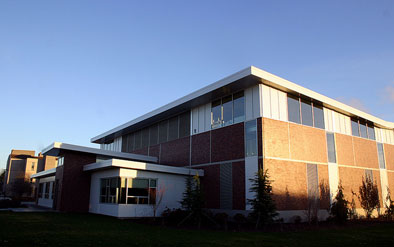OSU Energy Center Awarded LEED Platinum

Photo Credit: Oregon State University.
CORVALLIS, Ore. — Oregon State University’s Energy Center recently received LEED Platinum certification, making it the first Platinum-rated power facility in the nation, and the first Platinum LEED building on campus, according to planners.
The building, which opened in June 2010, includes a white reflective roof, water-efficient landscaping, and the use of recycled building materials. The majority of the project’s construction debris were also recycled, according Larrie Easterly, the university’s engineering manager.
The plant features a rainwater harvesting system to collect water used for boilers and hot water is generated by heat recovery from the steam system. Natural lighting and ventilation and radiant heating contribute to the building’s reduced energy use, which is 52 percent better than the Oregon building code, according to the university.
The energy center, which replaced a nearly 90-year-old heat plant with failing boilers and seismic issues, is a cogeneration facility that combines heating and electricity generation. The new plant, with a maximum generation capacity of 6.5 megawatts, allows OSU to generate about half of its electrical needs on site.
In addition to reducing its carbon footprint by 38 percent compared to the old facility, the new plant is expected to lower the university’s energy costs by $650,000 a year.
“I’ve worked on this project since day one, which is almost eight years ago,” Easterly said. “It’s really nice to see something that a lot of people have worked on finally being completed. It’s not often that facilities staff gets to work on a building made for themselves.”
Students will also be able to use the energy center to mine data and run simulations to learn how energy production works.
Funding for the project came from a combination of bonds, gifts, grants, energy tax credits and university funds. Some of the bond money will be repaid through energy savings, the statement said.
Oh Planning + Design and Jacobs Engineering, both of Portland, collaborated on the center. W&H Pacific worked on civil engineering and landscape architecture; PAE Consulting Engineers worked on mechanical, electrical and plumbing; Green Building Services was hired for LEED documentation and certification; Rider, Levett & Bucknall for cost estimating; and Andersen Construction was the construction manager/general contractor, according to the university.
